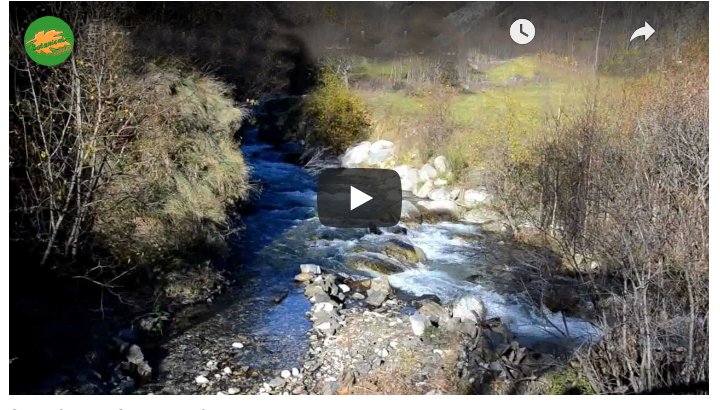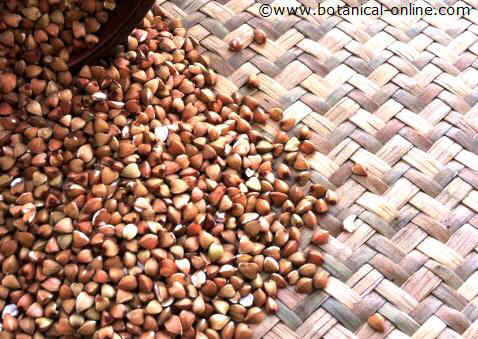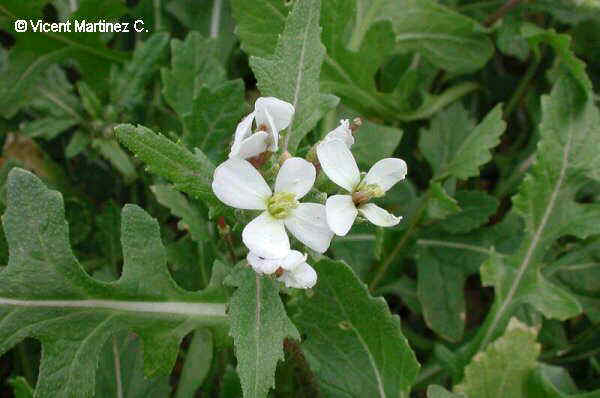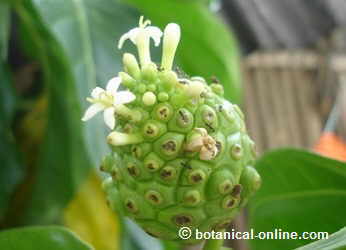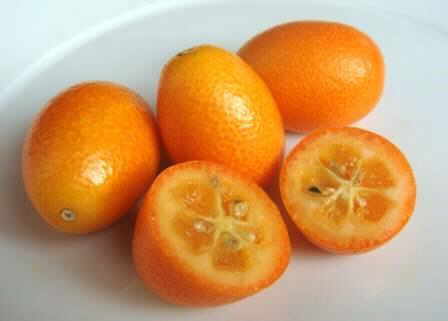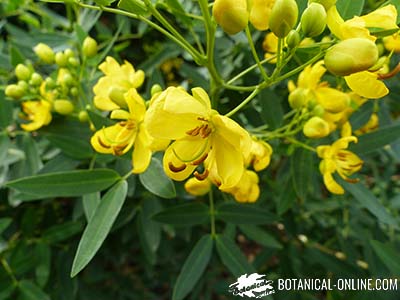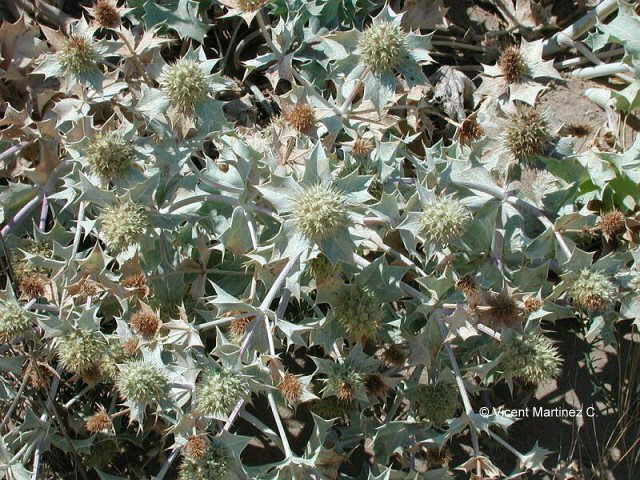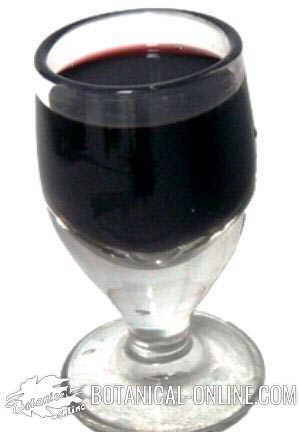Contents
Health benefits of field eryngo (Eryngium campestre L.)
Common noun: Field eryngo
Scientific noun: Eryngium campestre L.
Family. Carrot family -Umbelliferae
Habitat: By the side of the paths and dry grasslands.
Characteristics of Field eryngo
Perennial plant of the Carrot family – Umbelliferae- up to 70 cm. Erect stems, grayish green. Pinnate leaves, divided in 3 lobes; lower leaves petiolated; upper ones sessile. Flowers in corymbs, bluish, with bracts longer than them.
Picking-up and storing Field eryngo
Its leaves should always be eaten up fresh. As for the root it should be picked up from summer to autumn. They should dried off and stored in a fresh place.
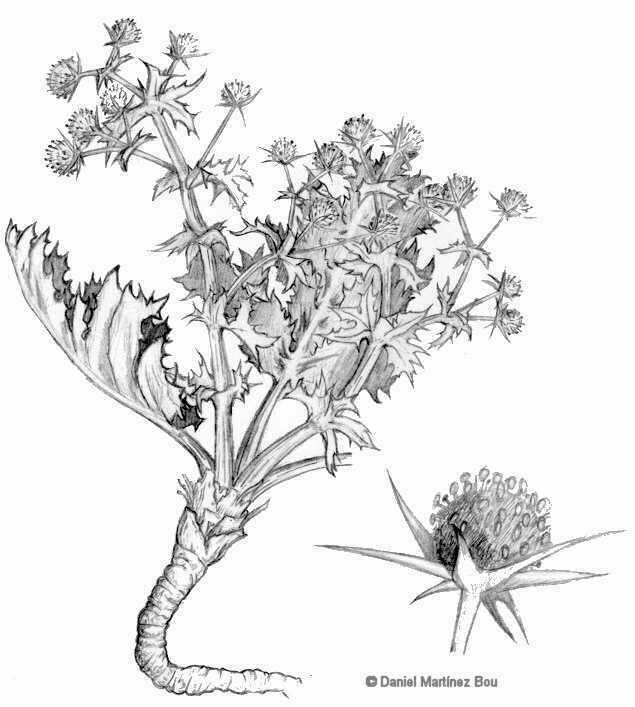
Active components:
– Inulin
– Saponins
– Tannins
– Furanocoumarins
– Caffeic acid
– Monoterpene Glycosides
Medicinal properties of field eryngo
Internal use
– Depurative: It purifies the blood and combats the inflammations that affect the urinary tracts (kidney stones, painful micturitions, uretritis, chronic prostatitis, etc.) or those of the circulatory apparatus (albuminuria, icterus, etc.) (15 tincture drops three times a day.
Very suitable for cellulite (Decoction of 50 g of dried roots per liter of water Take 3 cups a day)
– Diuretical:It favours the elimination of corporal liquids, by making the kidneys overwork, being very appropriate in cases of gout, rheumatic and heart illnesses that associate with the accumulation of water in the body. (Decoction of 20 gr. of root in ½ liter of water during 10 minutes. Three glasses a day, after each meal)
– Expectorant: It acts on the mucous of the lungs, favoring the expectoration in cases of cold or flu and avoiding the spasms. (The treatment seen before can be suitable to such an end)
– Diaphoretic: It stimulates the sudation, reason why it favors the diuresis and helps to eliminate toxins of the body. (Decoction of the root)
External use
– Skin sores and body pain::There is an opinion in certain Mediterranean areas that this plant acts against the corporal pains and skin sores. A lot of people of the field used to take a small branch with themselves because, as they believe, the plant acted as an analgesic against the corporal pains, avoiding the appearance of blisters in those areas of the skin where a friction with the clothes took place.
This opinion, which has not been proved, seems not to have foundation, especially for the fact that those who maintained it thought that it was not necessary that the plant entered in direct contact with the skin.
Another uses
Edible plant: It is a plant whose tender leaves can be eaten up in salads, combined with others with similar effects, as the dandelion, the cress, the parsley, etc. The root can be eaten candied.
Toxicity of Field eryngo
: There are not studies that point out their possible toxicity. However, in case of abuse, because of its diuretic and diaphoretic properties, it could produce an unbalance of the blood pressure, by decreasing it too much.
![]() More information about plants.
More information about plants.

